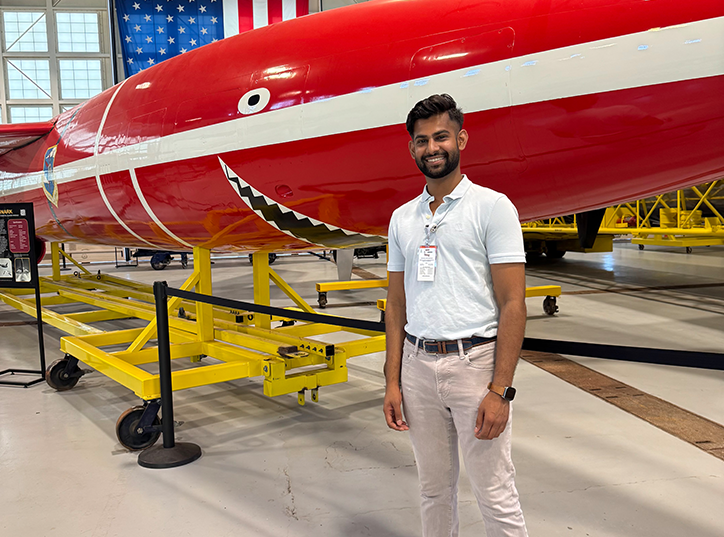From launch pads to life goals: KCU graduate Saahil Golia charts a course toward aerospace medicine

Few medical students complete their education at a launchpad—but for Saahil Golia, the dream of becoming a physician has always been tied to something bigger—something beyond the boundaries of traditional practice and, quite literally, the stratosphere.
The 2025 graduate of Kansas City University’s (KCU) College of Osteopathic Medicine spent his last four weeks of medical school immersed in a clinical rotation at NASA’s Kennedy Space Center. There, he witnessed firsthand the breadth of aerospace medicine—from astronaut readiness to occupational exposures, environmental safety and the unexpected challenges of working in a spaceport built atop a national wildlife refuge.
“It truly was one of the best experiences ever—getting to actually be part of NASA, working with, hopefully, some of my future colleagues, and seeing the process up close,” he said.
Golia encountered everything from hydrazine exposure protocols to hearing protection research and even helped tag crocodiles and count manatees as part of the center’s environmental health surveillance. The rotation offered a rare, hands-on look at the complex intersection of human health and space exploration. But perhaps the most memorable moment came on his very first day when he witnessed not one, but two rocket launches, including a SpaceX mission carrying astronauts into orbit.
“This experience cemented it for me,” Golia said. “Aerospace medicine is what I want to do.”
The highly selective rotation accepts only a handful of students each year. Golia was one of just three selected for his session, chosen from a pool of hundreds of applicants. While many candidates had the credentials, what set him apart was something less tangible.
“One of the doctors told me they’re really looking for enthusiasm and a genuine passion for the field,” he added. “That’s what makes the difference.”
Throughout his time at NASA, Golia worked alongside flight surgeons, engineers and researchers. He participated in triage planning, explored emergency protocols and contributed to projects in biomedical engineering and environmental health. For his final presentation, he developed a research project examining the feasibility of negative pressure wound therapy in microgravity.
The rotation affirmed something Golia says he’ll carry with him throughout his career: great physicians don’t just treat conditions—they consider context. “It’s not just about the procedure,” he said. “It’s about understanding the whole person and the world they move through.”
He credits KCU with preparing him to take full advantage of the opportunity. “KCU gave me the foundation and flexibility to pursue something as specialized as aerospace medicine,” Golia said. “The mentorship, the research support, the global perspective—it all helped me get here.”
That broader perspective came, in part, from his involvement in KCU’s Global Health program, where he worked in underserved communities abroad throughout his time in medical school. The experience deepened his understanding of how environment, infrastructure and public health intersect—knowledge that proved relevant during his time at NASA.
Golia will soon begin a preliminary surgery residency in Richmond, Virginia, where he’ll continue building his clinical skills while staying on course for a future in aerospace medicine.
Wherever he launches next, the insight gained at NASA—and the training he received at KCU—will help him soar to new heights.
